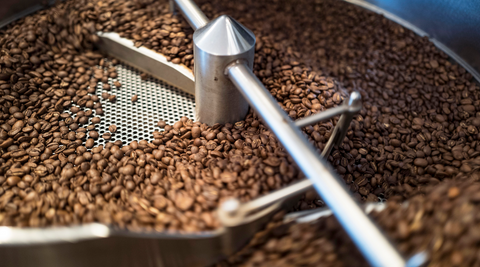
Introduction: Cupping is an essential practice in the world of coffee roasting. It serves as a crucial tool for evaluating the quality, consistency, and flavor profiles of roasted coffee beans. In this blog post, we explore the significance of cupping in the roasting process and how it helps coffee roasters ensure the highest standards of excellence in their craft.
Understanding Cupping: Cupping is a sensory evaluation method used by coffee professionals to assess the aroma, taste, and overall quality of coffee beans. It involves carefully observing and analyzing the characteristics of different coffees side by side. By cupping, roasters gain valuable insights into the flavor nuances, acidity, body, and balance of their roasts.
Quality Control and Consistency: Cupping plays a vital role in quality control for coffee roasters. It allows them to maintain consistency across batches and ensure that their coffee meets the desired standards. By cupping samples from various roasts, roasters can identify any variations or deviations from their target flavor profiles. This enables them to make adjustments in their roasting process to achieve the desired consistency in taste, ensuring that every cup brewed from their beans is of exceptional quality.
Developing the Palate: Cupping is not only a means of evaluating coffee; it also serves as a way for coffee roasters to develop and refine their palates. By regularly cupping different coffees from various origins, roasters train their taste buds to discern subtle flavor notes and identify the unique characteristics of each bean. This enhanced sensory perception helps roasters make informed decisions during the roasting process, enabling them to highlight and accentuate the flavors that make a particular coffee exceptional.
Identifying Flavor Profiles: Through cupping, coffee roasters gain valuable insights into the flavor profiles of different coffees. They assess attributes such as acidity, sweetness, body, and aftertaste, allowing them to understand the inherent qualities of the beans they are working with. This knowledge guides the roaster in determining the optimal roast level and developing a roasting profile that brings out the best flavors of the coffee.
Continuous Improvement: Cupping sessions provide an opportunity for coffee roasters to evaluate and improve their roasts continually. By comparing samples side by side, they can identify any shortcomings or areas for enhancement. This feedback loop enables roasters to fine-tune their techniques, experiment with different roast profiles, and push the boundaries of flavor to consistently deliver exceptional coffee to their customers.
Collaboration and Communication: Cupping also fosters collaboration and communication within the coffee industry. Roasters, importers, and producers come together for cupping sessions to evaluate coffees, exchange knowledge, and discuss their experiences. This collective effort helps build relationships, establish quality benchmarks, and drive innovation in the coffee roasting community.
Conclusion: Cupping plays a fundamental role in the world of coffee roasting, serving as a tool for evaluating quality, ensuring consistency, and refining the craft. It empowers coffee roasters to develop their palates, identify flavor profiles, and continuously improve their roasts. By embracing cupping as an integral part of their roasting process, coffee professionals can deliver exceptional coffee experiences, capturing the essence of each bean and sharing it with coffee enthusiasts around the world.





